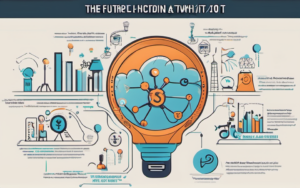The world faces a pressing need for sustainable solutions, as environmental challenges like climate change, resource depletion, and pollution intensify. Fortunately, emerging technologies offer a powerful arsenal of tools to address these issues and pave the way for a more sustainable future. From renewable energy solutions to smart agriculture practices, innovation is driving a paradigm shift towards a greener world.
Harnessing Innovation for a Sustainable Future
Introduction: The Urgent Need for Sustainable Solutions
The urgency of finding sustainable solutions is undeniable. Climate change is accelerating, natural resources are dwindling, and the global population continues to grow. Addressing these challenges requires a fundamental shift in our approach to resource management, energy production, and consumption patterns. Sustainable solutions are no longer a luxury; they are essential for the well-being of our planet and future generations.
The Role of Emerging Technologies in Sustainability
Emerging technologies are playing an increasingly vital role in driving sustainable solutions. By harnessing advancements in fields like artificial intelligence (AI), biotechnology, and nanotechnology, we can create innovative solutions to environmental challenges. These technologies can improve resource efficiency, reduce waste, and create cleaner energy sources, ultimately leading to a more sustainable way of life.
Transformative Technologies for a Greener World
Renewable Energy and Energy Efficiency
Solar and Wind Power: Harnessing Nature’s Energy
Harnessing the power of the sun and wind is a key aspect of transitioning to a sustainable energy future. Solar panels convert sunlight into electricity, while wind turbines use wind energy to generate power. These technologies are becoming increasingly cost-effective and efficient, making them viable alternatives to traditional fossil fuels.
Smart Grids: Optimizing Energy Distribution
Smart grids use advanced technology to manage energy distribution more efficiently. They can monitor energy consumption in real-time, optimize grid performance, and integrate renewable energy sources seamlessly. This helps reduce energy waste and improve overall grid reliability.
Energy Storage Solutions: Ensuring Reliability
Energy storage solutions, such as batteries and pumped hydro, are crucial for addressing the intermittent nature of renewable energy sources. They enable us to store excess energy generated during peak periods and release it when demand is high, ensuring a consistent supply of clean energy.
Sustainable Agriculture and Food Production
Precision Agriculture: Optimizing Resource Use
Precision agriculture uses sensors, data analytics, and other technologies to optimize crop yields and resource use. By monitoring soil conditions, weather patterns, and crop health, farmers can apply fertilizers, water, and pesticides more efficiently, reducing waste and environmental impact.
Vertical Farming: Growing Food in Urban Environments
Vertical farming involves growing crops in stacked layers within controlled environments. This innovative approach maximizes land use, reduces water consumption, and minimizes the need for pesticides, making it an ideal solution for urban areas with limited space.
Alternative Protein Sources: Reducing Environmental Impact
Traditional meat production has a significant environmental footprint. Alternative protein sources, such as plant-based meats and cultivated meat, offer a more sustainable solution. These innovations can reduce greenhouse gas emissions, conserve water, and lessen the pressure on land use.
Waste Management and Circular Economy
Waste-to-Energy Technologies: Transforming Waste into Resources
Waste-to-energy technologies convert waste materials into usable energy. Incineration and gasification processes can generate electricity or heat from waste, reducing landfill reliance and offering a more sustainable approach to waste management.
Recycling and Upcycling: Closing the Loop
Recycling and upcycling are crucial components of a circular economy. Recycling involves processing used materials into new products, while upcycling transforms waste into higher-value items. These practices reduce waste, conserve resources, and promote sustainable consumption patterns.
Biodegradable Materials: Reducing Plastic Pollution
Plastic pollution is a major environmental concern. Biodegradable materials, such as bioplastics made from renewable resources, offer a promising solution. These materials decompose naturally, reducing the accumulation of plastic waste in landfills and oceans.
Sustainable Transportation
Electric Vehicles: Reducing Emissions
Electric vehicles (EVs) are powered by electricity instead of fossil fuels, significantly reducing emissions. As battery technology advances and charging infrastructure expands, EVs are becoming more accessible and affordable, making them a viable option for sustainable transportation.
Autonomous Vehicles: Optimizing Traffic Flow
Autonomous vehicles (AVs) use sensors and AI to navigate roads without human intervention. AVs can optimize traffic flow, reduce congestion, and improve road safety, contributing to a more sustainable and efficient transportation system.
Sustainable Aviation: Reducing Carbon Footprint
The aviation industry has a significant carbon footprint. Sustainable aviation technologies, such as biofuels and electric aircraft, are being developed to reduce emissions and make air travel more environmentally friendly.
Overcoming Challenges and Fostering Collaboration
Addressing Ethical and Social Considerations
As emerging technologies evolve, it’s crucial to address ethical and social considerations. For example, ensuring equitable access to sustainable technologies and mitigating potential job displacement are critical aspects of promoting responsible innovation.
Promoting Accessibility and Inclusivity
Sustainable solutions should be accessible to everyone, regardless of their income or location. This requires addressing issues of affordability, infrastructure development, and technology transfer to ensure equitable access to these innovations.
Encouraging Public-Private Partnerships
Public-private partnerships are essential for accelerating the development and deployment of sustainable technologies. By collaborating, governments, businesses, and research institutions can leverage their resources and expertise to drive innovation and create a more sustainable future.
The Future of Sustainable Innovation
Emerging Trends and Opportunities
The field of sustainable technology is constantly evolving, with new innovations emerging regularly. Areas like artificial intelligence, biotechnology, and nanotechnology hold immense potential for driving sustainable solutions.
The Importance of Continuous Research and Development
Continued research and development are critical for advancing sustainable technologies. Investing in scientific research, fostering innovation, and supporting the development of new solutions are essential for creating a more sustainable future.
A Call to Action: Embracing Sustainable Technologies for a Better Future
Embracing sustainable technologies is not just a choice; it’s a necessity. We must actively support and promote these innovations to mitigate environmental challenges, create a more equitable world, and ensure a sustainable future for generations to come. The time for action is now. By harnessing the power of technology and working together, we can build a more sustainable and prosperous future for all.




